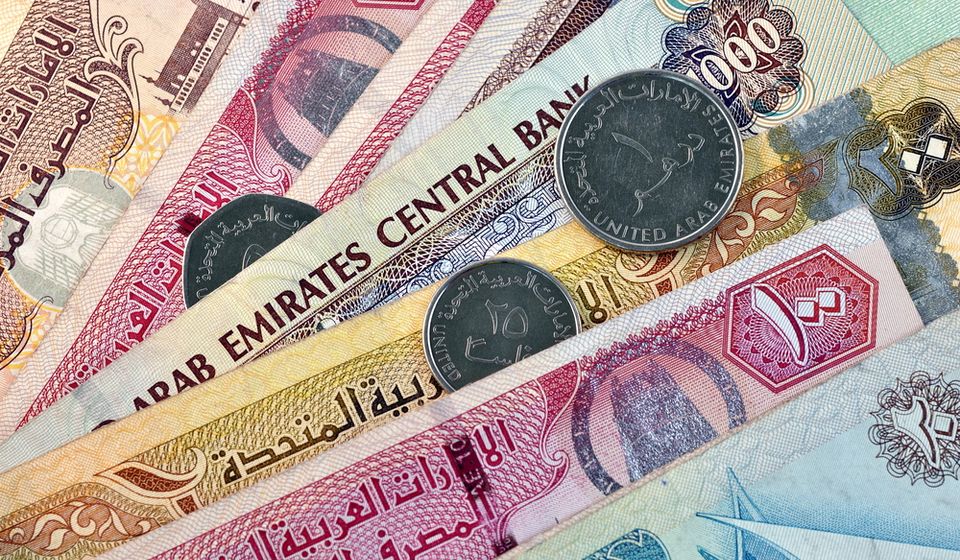[ad_1]

The top five banks in the UAE – First Abu Dhabi Bank (FAB), Emirates NBD, Dubai Islamic Bank (DIB), Abu Dhabi Commercial Bank (ADCB) and Mashreq Bank – posted a combined annual net profit of US$11.5 billion ( AED42.1 billion) in 2022, driven by higher interest rates and business volumes, boosting overall revenue.
S&P Global said UAE banks’ net interest income – the difference between interest income earned on lending activities and interest paid to depositors – has soared in the past few quarters as lenders passed on rate rises to customers.
The UAE central bank raised its benchmark interest rate by 25 basis points (bps) to 5.5% in March, following the Federal Reserve’s 25 basis point hike, as top banks continued their most aggressive series of rate hikes since the 1980s.
UAE’s largest bank by assets, FAB, reported full-year net profit up 7% to AED13.4bn, Emirates NBD’s annual profit rose 40% to AED13bn and DIB’s net profit soared 26% to AED5.6bn Ram, ADCB’s fiscal 2022 net profit rose 23 percent to AED6.4 billion, while Mashreq reported a 270 percent rise in net profit to AED3.7 billion.
read: Emirates NBD’s full-year profit up 40% to $3.53 billion
Meanwhile, the top 10 banks in the UAE reported a 31% rise in annual net profit in 2022, as the sector is expected to hold steady in 2023, driven by growing demand for digital financial services and the rapid adoption of customer experience, KPMG said. Prospects Enhance fintech solutions and industry competitiveness.
The accounting firm stated that in its annual report UAE Banking Outlook Reportby 2022, the cost-to-income ratio will improve by an average of 1.8%, and banks will maintain sufficient capital levels, well above minimum regulatory requirements.
The total assets of the 10 Gulf banks also rose 10.6 percent year-on-year, driven by strong growth in deposits, loans and advances. “The UAE’s dynamic economy and its favorable business environment have attracted significant foreign investment, and banks have benefited from the high volume of capital and high-net-worth clients the UAE attracts,” said Abbas Basrai, partner and head of financial services at KPMG in Lower Gulf.
Basrai sees the government’s commitment to regulatory reform as one of the main factors contributing to the industry’s stability.
read: First Abu Dhabi Bank reports highest net profit for 2022
Financial institutions in the UAE are generally well-capitalized and have ample liquidity, and their asset quality has improved slightly from the peak during the epidemic. However, pressure on profitability of smaller banks, alternative delivery channels, and competition from digital banks are expected to increase shareholder interest in consolidation to enhance the resilience of banks’ financial positions.
Digital strategies for UAE banks
In other news, digital banking is rapidly changing the playing field in the UAE’s financial services industry, with incumbent banks facing increasing competition from upstarts and challenger banks that make customer experience their point of sale.
Presenting the 2023 edition of UAE Banking Perspectives.
This year’s publication discusses three emerging themes that are likely to shape the banking industry for decades to come: digital enablement, the price of compliance, and a human perspective. https://t.co/2XUuoGKSYc pic.twitter.com/jP8Hyjn1FT— KPMG Lower Gulf (@KPMG_LowerGulf) March 27, 2023
Banks are embarking on a digital growth strategy focused on cloud adoption, which is expected to deliver benefits including scalability, flexibility, faster time-to-value and cost-effectiveness to maintain a competitive advantage in a dynamic environment.
Customers’ changing needs and expectations are driving banks to offer technology-enabled services beyond traditional banking. Banks in the UAE, especially the larger banking institutions, are exploring Metaverse as a new channel to deliver financial services to their customers and connect with the larger banking ecosystem.
[ad_2]
Source link